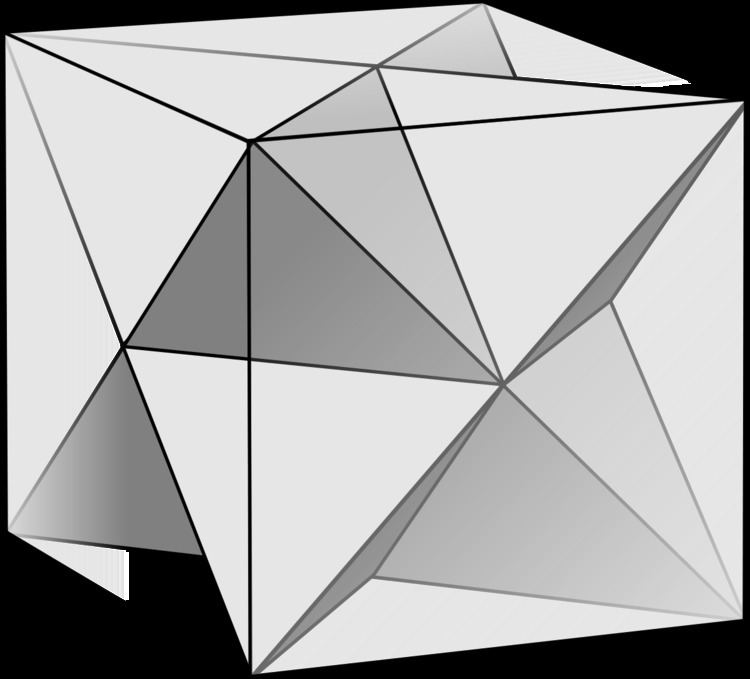 | ||
In geometry, demihypercubes (also called n-demicubes, n-hemicubes, and half measure polytopes) are a class of n-polytopes constructed from alternation of an n-hypercube, labeled as hγn for being half of the hypercube family, γn. Half of the vertices are deleted and new facets are formed. The 2n facets become 2n (n-1)-demicubes, and 2n (n-1)-simplex facets are formed in place of the deleted vertices.
Contents
They have been named with a demi- prefix to each hypercube name: demicube, demitesseract, etc. The demicube is identical to the regular tetrahedron, and the demitesseract is identical to the regular 16-cell. The demipenteract is considered semiregular for having only regular facets. Higher forms don't have all regular facets but are all uniform polytopes.
The vertices and edges of a demihypercube form two copies of the halved cube graph.
Discovery
Thorold Gosset described the demipenteract in his 1900 publication listing all of the regular and semiregular figures in n-dimensions above 3. He called it a 5-ic semi-regular. It also exists within the semiregular k21 polytope family.
The demihypercubes can be represented by extended Schläfli symbols of the form h{4,3,...,3} as half the vertices of {4,3,...,3}. The vertex figures of demihypercubes are rectified n-simplexes.
Constructions
They are represented by Coxeter-Dynkin diagrams of three constructive forms:
- ... (As an alternated orthotope) s{21,1...,1}
- ... (As an alternated hypercube) h{4,3n-1}
- .... (As a demihypercube) {31,n-3,1}
H.S.M. Coxeter also labeled the third bifurcating diagrams as 1k1 representing the lengths of the 3 branches and lead by the ringed branch.
An n-demicube, n greater than 2, has n*(n-1)/2 edges meeting at each vertex. The graphs below show less edges at each vertex due to overlapping edges in the symmetry projection.
In general, a demicube's elements can be determined from the original n-cube: (With Cn,m = mth-face count in n-cube = 2n-m*n!/(m!*(n-m)!))
Symmetry group
The symmetry group of the demihypercube is the Coxeter group
Orthotopic constructions
Constructions as alternated orthotopes have the same topology, but can be stretched with different lengths in n-axes of symmetry.
The rhombic disphenoid is the three-dimensional example as alternated cuboid. It has three sets of edge lengths, and scalene triangle faces.
